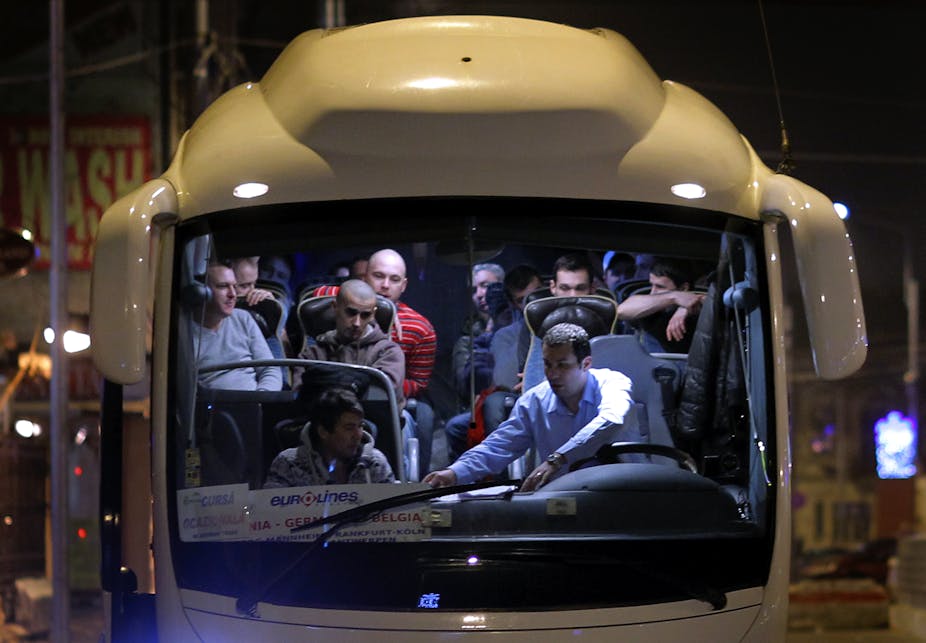New data from the Office for National Statistics (ONS) has shown a small drop of about 4,000 in the number of Romanian and Bulgarian-born people employed in the UK in the first three months of 2014 – the period immediately after restrictions on the employment of migrants from these countries ended.
Much has been made in some newspapers about what impact the lifting of these controls would have on the numbers of Romanian and Bulgarian (also known as A2) migrants in the UK, with regular suggestions that the number would increase sharply.
So it is tempting to conclude that the new Labour Force Survey (LFS) data – showing that the opposite has happened and that actually, fewer Romanian and Bulgarian people are now working in the UK than at the end of last year – proves these stories wrong. But it is far too early to tell.
Migration data is complicated and often contradictory. Bold claims about how little effect the lifting of labour market restrictions will have on the numbers of Romanians and Bulgarians working in the UK over the next year are premature.
Claims of this sort, based on a single quarter of evidence from one source, are nearly as risky as the predictions last year that lifting work restrictions would lead to a sudden “flood” of A2 migrants. Over the course of this year we will see several more sets of data released which may yet tell a very different story. We simply don’t know, and guessing doesn’t get us very far.
What the new Labour Force Survey data actually tell us is this:

The number of Romanian – and Bulgarian-born people – employed in the UK increased by more than 28,000 compared to the same period last year. The figures from the first three months (Q1) of 2014 show about 140,000 A2 migrants employed in the UK (including self employed). In the same period of 2013 the number was 112,000.
A closer look at figure 1 also shows that between the first quarter and the last quarter of 2013 – before January 1st, when transitional labour market controls were lifted – this group had increased in size by 32,000 to 144,000.
This means that the 28,000 increase from Q1 2013 to Q1 2014 actually represents a slight decline on the previous quarter (Q4 2013).

Until now there has been a consistent pattern of increased numbers of A2 migrants working in the UK in the first quarter of each year, compared to the last quarter of the previous year, in every year except one (2009-10) since the two countries joined the EU in 2007. This Q4-Q1 increase has regularly exceeded 10,000, and sometimes (2010-11) exceeded 20,000 despite the transitional controls being in place.
The changes that we see in the new data cannot really be seen as a result of the end of controls on the employment opportunities of A2 migrants. It is important that we see this data for what it is – an important first step in understanding how A2 migration is changing – but until we have complete data for 2014 it is impossible to achieve any definite conclusions about the impact of the end of restrictions.

